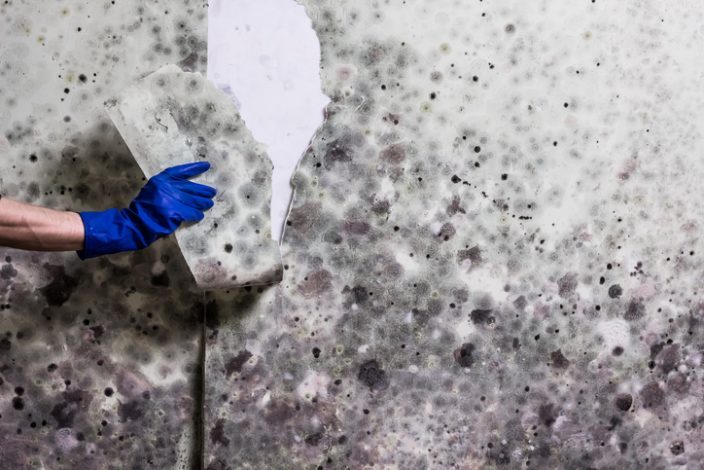After Mold Remediation Methods for Tidy Areas
After Mold Remediation Methods for Tidy Areas
Blog Article
Your Ultimate Guide to Article Mold And Mildew Remediation Techniques
Browsing the world of post-mold removal techniques is a meticulous procedure that requires focus to detail and a thorough understanding of the intricacies included. In the after-effects of mold problem, knowing just how to successfully eliminate the mold and avoid its reoccurrence is paramount for preserving a healthy indoor atmosphere. From selecting the best cleansing and decontaminating approaches to executing approaches for long-lasting mold prevention, each action in the remediation journey plays a critical duty in making certain a successful result. As we embark on this exploration of post-mold removal strategies, we will discover the key techniques and ideal techniques that can assist you recover your space to its pre-mold condition and secure it versus future mold risks.
Comprehending Post-Mold Remediation Process
After completing the mold and mildew removal procedure, it is critical to comprehend the post-mold removal methods that are necessary to ensure a thorough and reliable clean-up. Once the mold has actually been eliminated, the next action involves cleansing and sanitizing the impacted locations to protect against any type of regrowth of mold and mildew. This consists of making use of specialized cleansing representatives to clean down surfaces and kill any type of staying mold and mildew spores. It is essential to dry the area totally to inhibit the growth of mold and mildew in the future (Post Mold Remediation Report). Proper ventilation and dehumidification can aid in this process.
In addition, performing a final inspection post-remediation is important to guarantee that all mold and mildew has been effectively eradicated. If the assessment exposes any remaining mold, additional remediation may be necessary.
Reliable Cleaning Up and Sanitizing Approaches

Stopping Future Mold Development

Significance of Proper Ventilation
Correct air flow plays an important role in avoiding moisture build-up, a key consider mold development within interior settings. Efficient air flow systems help get rid of excess moisture from the air, minimizing the chances of mold and mildew spores finding the dampness they need to spread and sprout. recommended you read Without ample ventilation, indoor rooms can become a reproduction ground for mold, leading to potential health risks and architectural damage.
By guaranteeing proper air blood circulation, air flow systems can also aid in drying moist locations quicker after water damage or flooding cases, further hindering mold growth. what to do after mold remediation. In rooms like washrooms, basements, attics, and kitchen areas where dampness degrees often tend to be higher, installing and keeping reliable ventilation systems is critical in stopping mold and mildew problems

Tracking and Upkeep Tips
Offered the critical function that correct air flow plays in stopping mold and mildew growth, it is imperative to develop efficient monitoring and upkeep pointers to make sure the continued functionality of ventilation systems. Normal inspections of ventilation systems should be performed to look for any type of indicators of clogs, leaks, or malfunctions that can restrain appropriate air flow. Tracking moisture levels within the building is also important, as high humidity can contribute to mold and mildew development. Mounting a hygrometer can aid track moisture levels and sharp house owners to any spikes that may call for focus. Additionally, guaranteeing that air filters are consistently cleaned up or replaced is vital for keeping the performance of the ventilation system. Executing a schedule for regular maintenance tasks, such as duct cleaning and cooling and heating system inspections, can aid protect against issues prior to they escalate. By remaining attentive and proactive to the condition visit site of ventilation systems, residential or commercial property proprietors can efficiently alleviate the threat of mold regrowth and maintain a healthy and balanced indoor setting.
Final Thought
In verdict, post-mold remediation methods are necessary for ensuring a tidy and secure atmosphere. Comprehending the process, implementing effective cleaning and sanitizing approaches, avoiding future mold development, maintaining appropriate air flow, and regular monitoring are all important actions in the removal process. By complying with these guidelines, you can successfully get rid of mold and prevent its return, functioning or promoting a healthy living room for all occupants.
In the results of mold and mildew problem, understanding just how to properly remove the mold and mildew and avoid its reoccurrence is paramount for maintaining a healthy interior setting. Once the mold and mildew has been eliminated, the next action includes cleaning and decontaminating the affected locations to avoid any kind of regrowth of mold and mildew - After mold remediation. After eliminating visible mold and mildew growth, it is crucial to cleanse all surfaces in the damaged location to get rid of any staying mold spores. To additionally boost mold avoidance procedures, it is important to attend to underlying concerns that initially led to mold development.Provided the vital duty that proper ventilation plays in preventing mold and mildew development, it is imperative to establish effective tracking and maintenance pointers to make sure the ongoing performance of ventilation systems
Report this page